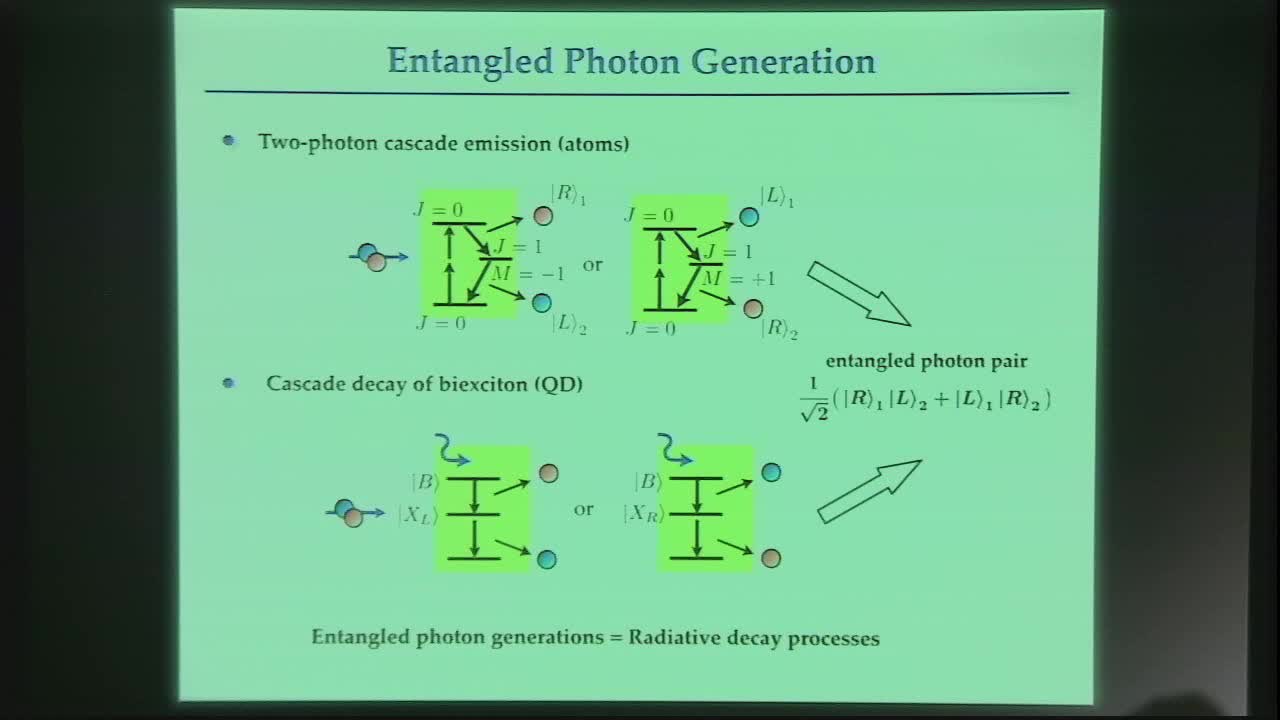Entangled Photon Generation via Biexciton in a Thin Film
Presenter
April 24, 2017
Keywords:
- Entangled photons, Biexction, Exciton, Cavity
Abstract
High-quality entangled-photon pairs are one of key resources for quantum computing and quantum information technologies. Since the observation of entangled photon generation via a biexciton from a CuCl bulk crystal, entangled photon generation mediated by the biexciton has been extensively studied. Recently, the biexciton of a CuCl thin film in a microcavity was observed, whose radiative decay was two times faster than that in the absence of the cavity (the Purcell effect of a biexciton). This indicates that this system provides highly efficient sources of entangled-photon pairs. In the present talk, we theoretically study the conditions of entangled photon generation from the planar CuCl microcavity.
This system exhibits a well-defined and large Rabi splitting of a cavity polariton. In this strong-coupling regime, the processes of entangled-photon pairs should be treated in a dressed-state picture in the cavity quantum electrodynamics (cavity QED). The wave vectors of the entangled photons are strongly affected by the dressed states.
To compare the cavity effect, we also study radiative decay processes of the biexciton in a thin film without the cavity. In this system, there exist surface polaritons as the dressed states of an exciton and photon in the free field. Although the dispersion relation of the surface polarition is well known, the coupling weight between the exciton and photon have not been obtained. We calculate the coupling weight and evaluate the efficiency of entangled photon generation.
